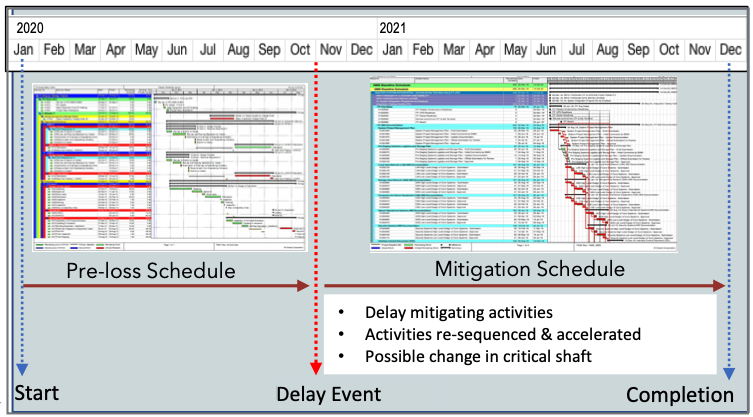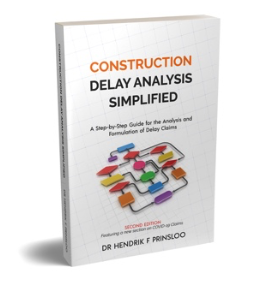EVERYONE HAS A PLAN UNTIL THEY GET PUNCHED IN THE FACE
FORMULATION | ANALYSIS | MANAGEMENT

During an interview with a reporter the heavyweight boxer, Mike Tyson, was asked whether he was worried about his opponent’s fight plan. He responded with the now-famous quote: “Everyone has a plan until they get punched in the mouth”
In construction, an unexpected delay to progress can feel like a punch in the mouth. Like Mike Tyson’s opponent, our plan for construction seldom stays intact after the devastating blow of a delay. To mitigate the impact of the delay most contractors would immediately review their initial plan to see what can be done to overcome the effect of the delay. As an expert witness, I have come across opinions that ignore the fact that plans often change when we are confronted with a delay. This inaccurate assumption is then used as the basis to apply some of the common prospective analysis methods.
The article explains the process of re-planning in the shadow of a delay and highlights pitfalls we should be aware of when analyzing the impact of a delay event retrospectively.

Dr Hendrik Prinsloo is an author, expert witness, researcher, and specialist in the field of schedule analysis.
What happens when a delay occurs
The occurrence of a delay has several consequences that influence the execution of a construction project. When a delay occurs the first priority is to introduce mitigating measures as rapidly as possible to limit the impact on the planned completion of the project. The original construction approach and sequencing of work depicted in the pre-delay schedule may no longer be viable because new repair and restoration activities are introduced. Activities are re-sequenced and accelerated to mitigate the impact of the delay event. The pre-loss schedule will have to be replaced by a new schedule that incorporates mitigation measures. It is likely that the critical path in the pre-delay schedule and the mitigation schedule would differ. Activities that were critical in the pre-loss schedule may not be critical anymore in the mitigation schedule.

Common analysis pitfalls to avoid
The As-Planned vs As-Built Analysis is often used when a delay is analyzed retrospectively. When a major delay takes it event triggers a chain of events to overcome the burden the delay event placed on the objective to complete the project by the contractual completion date. The result is the development of a new plan (schedule). It is possible that the critical path in the new schedule would differ from the critical path in the pre-delay (as-planned) schedule. The accuracy of the results of the analysis will be negatively influenced if critical path activities in the pre-delay schedule are compared to the same activities in the post-delay (mitigating) schedule without verifying whether these activities are still on the critical path.
In a recent case that involved the construction of a high-rise apartment building a delay impacted the construction of the elevator shaft. In the pre-delay (as-planned) schedule the elevator shaft was not on the critical path. The concrete structure of the building was on the critical path. In the post delay (mitigation) schedule the critical path shifted to the elevator shaft. In mitigating the delay the contractor moved resources from the concrete structure to the elevator shaft resulting in later than planned completion of the concrete structure.
Did the delay in completing the concrete structure delay project completion? If the elevator delay did not take place and a new schedule with a different critical path was not produced the answer might be affirmative. However, this argument will not be valid because, like Mike Tyson’s opponent’s fight plan, the plan for construction changed. In this example, we can see how important it is in delay analysis to consider the practical construction reality when a major delay event occurs

